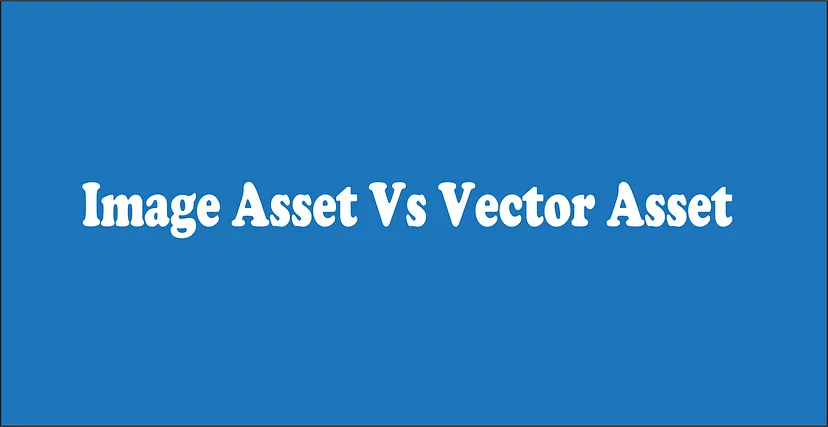
When it comes to creating visually appealing and responsive Android applications, developers often grapple with the decision of using image or vector assets. Both play crucial roles in the overall user experience, but understanding the differences between the two and when to use each is essential. In this comprehensive guide, we’ll explore the characteristics, advantages, and use cases of image and vector assets in the context of Android development.
Understanding Image vs Vector Assets in Android
In Android Studio, image assets and vector assets are two types of resources that can be used in an Android application.
Image assets:
Image assets are raster images that are designed using a bitmap format such as JPEG, PNG, and GIF. These are pixel-based graphics that are made up of a grid of pixels. Image assets are great for displaying realistic images or photographs in your app. However, when it comes to resizing, they can lose quality and become pixelated.
In Android Studio, you can create image assets by going to the “res” folder and selecting “New > Image Asset”. You can then select the image you want to use and choose various settings such as the file type, size, and name.
Vector assets:
Vector assets are graphics that are created using mathematical equations to define lines, curves, and shapes. Vector assets are resolution-independent and can be scaled to any size without losing quality. They are great for displaying icons, logos, and other graphics that need to be displayed in multiple sizes and resolutions.
In Android Studio, you can create vector assets by going to the “res” folder and selecting “New > Vector Asset”. You can then select the image you want to use and choose various settings such as the name, color, and size.
Image Asset Vs Vector Asset :
The main difference between image assets and vector assets in Android Studio is that image assets are raster images, while vector assets are made up of mathematical equations.
Here are some of the key differences between image assets and vector assets:
- Resolution: Image assets are made up of a fixed number of pixels and have a fixed resolution, while vector assets are resolution-independent and can be scaled up or down without losing quality.
- Size: Image assets can be very large in size, especially if they are high-resolution, while vector assets are generally much smaller in size.
- Quality: When you resize an image asset, it can become blurry or pixelated, while vector assets maintain their quality at any size.
- Compatibility: Image assets may not be compatible with all devices or screen resolutions, while vector assets can be used on any device and screen resolution.
- Editing: Image assets can be edited using image editing software like Photoshop, while vector assets can be edited using vector graphics software like Adobe Illustrator.
In general, if you need to display a realistic image or photograph in your app, use image assets. If you need to display an icon or logo that needs to be displayed in multiple sizes and resolutions, use vector assets.
Choosing the Right Asset for the Right Scenario
- Performance Considerations:
- Image assets may be preferable for static, high-detail visuals.
- Vector assets are optimal for scalable elements, icons, and animations.
- App Size and Loading Times:
- Image assets contribute to larger app sizes.
- Vector assets help reduce app size and loading times.
- Screen Density:
- Image assets require multiple versions for different screen densities.
- Vector assets scale seamlessly across various screen densities.
- Editing and Customization:
- Image assets are often more challenging to edit without losing quality.
- Vector assets can be easily customized and modified without compromising quality.
- Dynamic UI Elements:
- For dynamic and interactive UI elements, vectors are preferred.
- Image assets may be suitable for static elements with no need for scalability.
Summary
In the dynamic world of Android development, the choice between image and vector assets is a critical consideration. Both have their strengths and weaknesses, and the decision should be based on the specific requirements of the app. Striking a balance between visual appeal, performance, and scalability is key to creating a successful and engaging Android application. By understanding the characteristics of each asset type, developers can make informed choices that contribute to a seamless and visually pleasing user experience.
In summary, image assets are raster graphics that are great for displaying realistic images, while vector assets are resolution-independent and are great for displaying icons, logos, and other graphics that need to be displayed in multiple sizes and resolutions.
